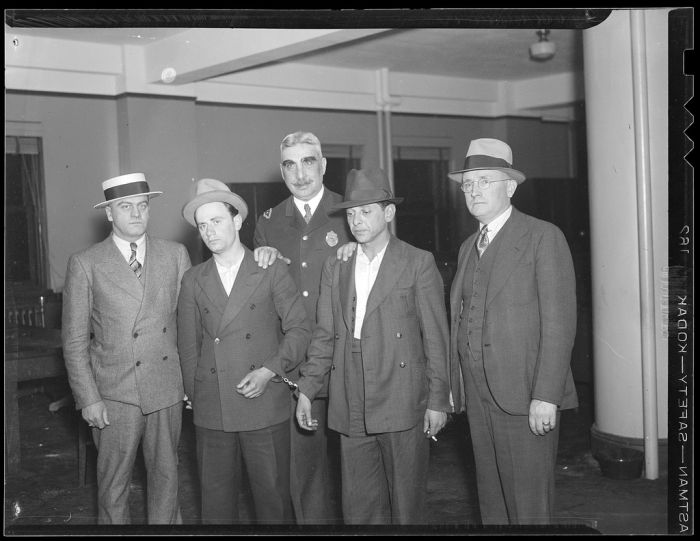History: Boston Police, Behind The Badge, 1930s, Boston, Massachusetts, United States
|
The city reacted strongly to the Fugitive Slave Law of 1850, which contributed to President Franklin Pierce's attempt to make an example of Boston after the Burns Fugitive Slave Case.
In 1822, the citizens of Boston voted to change the official name from "the Town of Boston" to "the City of Boston", and on March 4, 1822, the people of Boston accepted the charter incorporating the City. At the time Boston was chartered as a city, the population was about 46,226, while the area of the city was only 4.7 square miles (12 km2). In the 1820s, Boston's population began to swell, and the city's ethnic composition changed dramatically with the first wave of European immigrants. Irish immigrants dominated the first wave of newcomers during this period. By 1850, about 35,000 Irish lived in Boston. In the latter half of the 19th century, the city saw increasing numbers of Irish, Germans, Lebanese, Syrians, French Canadians, and Russian and Polish Jews settle in the city. By the end of the 19th century, Boston's core neighborhoods had become enclaves of ethnically distinct immigrants—Italians inhabited the North End, Irish dominated South Boston and Charlestown, and Russian Jews lived in the West End. Irish and Italian immigrants brought with them Roman Catholicism. Currently, Catholics make up Boston's largest religious community, and since the early 20th century, the Irish have played a major role in Boston politics—prominent figures include the Kennedys, Tip O'Neill, and John F. Fitzgerald.
Between 1631 and 1890, the city tripled its physical size by land reclamation—by filling in marshes, mud flats, and gaps between wharves along the waterfront —a process that Walter Muir Whitehill called "cutting down the hills to fill the coves". The largest reclamation efforts took place during the 19th century. Beginning in 1807, the crown of Beacon Hill was used to fill in a 50-acre (20 ha) mill pond that later became the Haymarket Square area. The present-day State House sits atop this lowered Beacon Hill. Reclamation projects in the middle of the century created significant parts of the South End, the West End, the Financial District, and Chinatown. After The Great Boston Fire of 1872, workers used building rubble as landfill along the downtown waterfront. During the mid-to-late 19th century, workers filled almost 600 acres (2.4 km²) of brackish Charles River marshlands west of Boston Common with gravel brought by rail from the hills of Needham Heights. Also, the city annexed the adjacent towns of South Boston (1804), East Boston (1836), Roxbury (1868), Dorchester (including present day Mattapan and a portion of South Boston) (1870), Brighton (including present day Allston) (1874), West Roxbury (including present day Jamaica Plain and Roslindale) (1874), Charlestown (1874), and Hyde Park (1912). Other proposals, for the annexation of Brookline, Cambridge, and Chelsea, have been unsuccessful.
By the early and mid-20th century, the city was in decline as factories became old and obsolete, and businesses moved out of the region for cheaper labor elsewhere. Boston responded by initiating various urban renewal projects under the direction of the Boston Redevelopment Authority (BRA), which was established in 1957. In 1958, BRA initiated a project to improve the historic West End neighborhood. Extensive demolition was met with vociferous public opposition. BRA subsequently reevaluated its approach to urban renewal in its future projects, including the construction of Government Center. In 1965, the first Community Health Center in the United States opened, the Columbia Point Health Center, in the Dorchester neighborhood. It mostly served the massive Columbia Point public housing complex adjoining it, which was built in 1953. The health center is still in operation and was rededicated in 1990 as the Geiger-Gibson Community Health Center.
|
|









